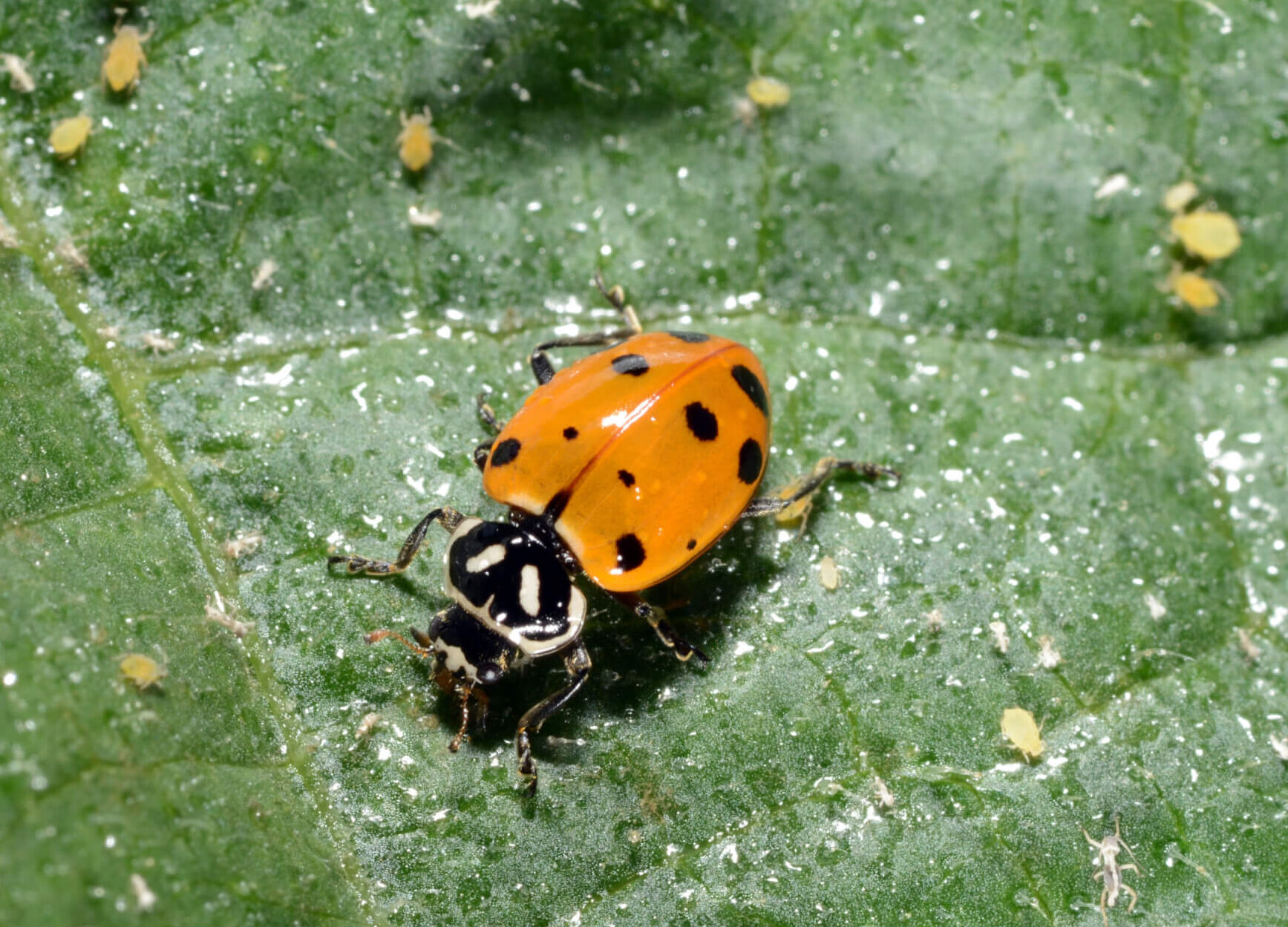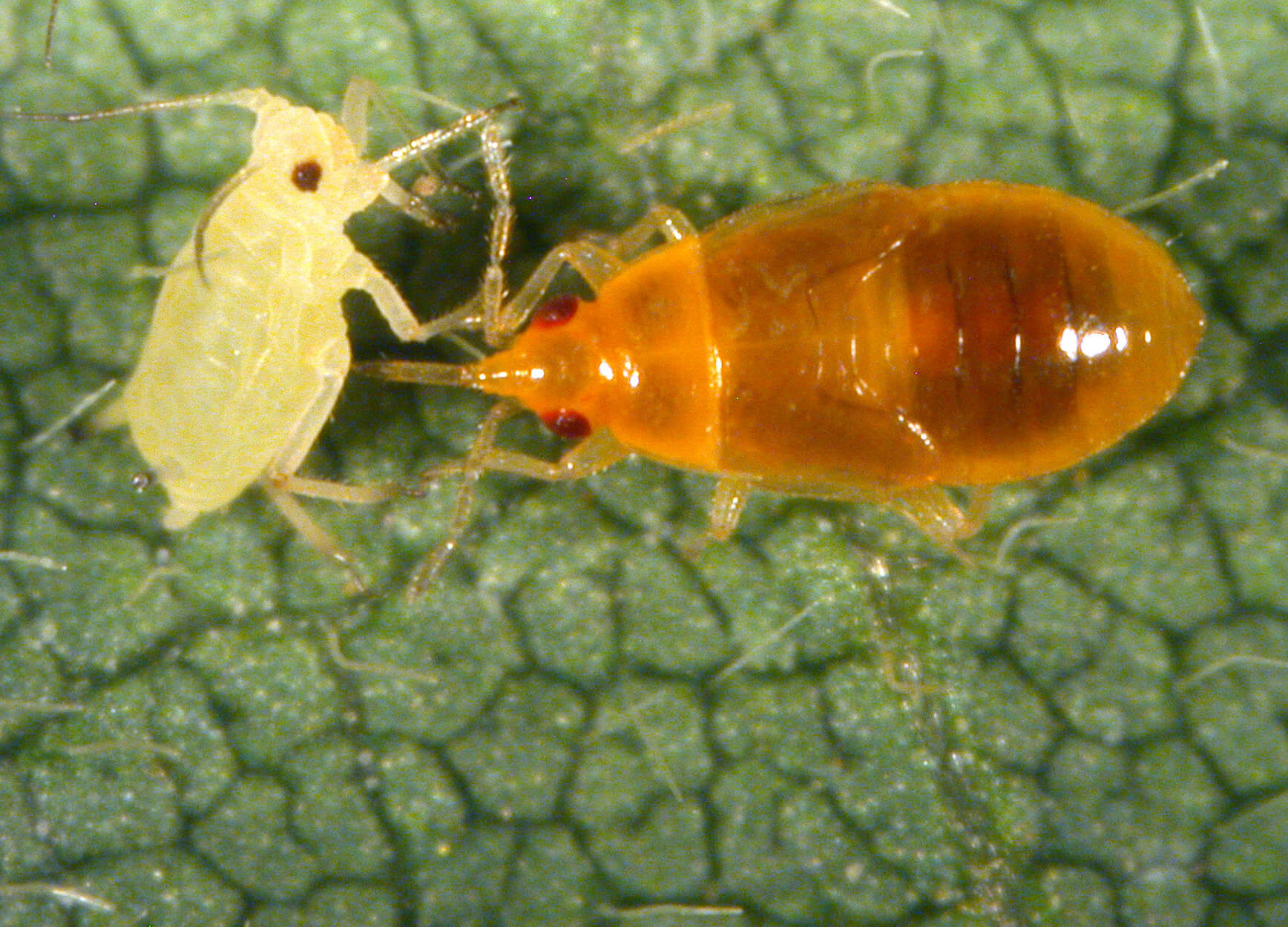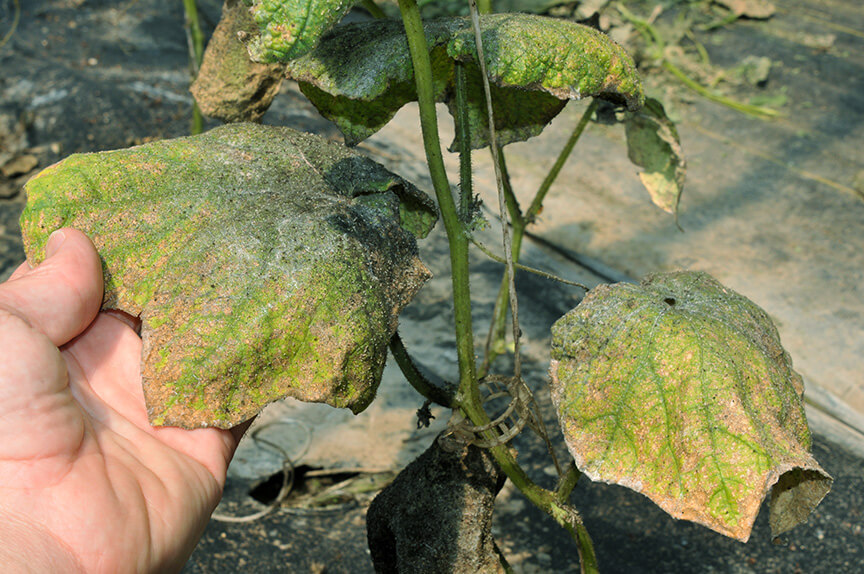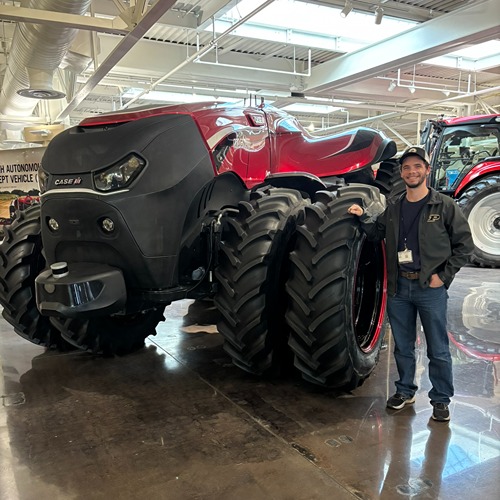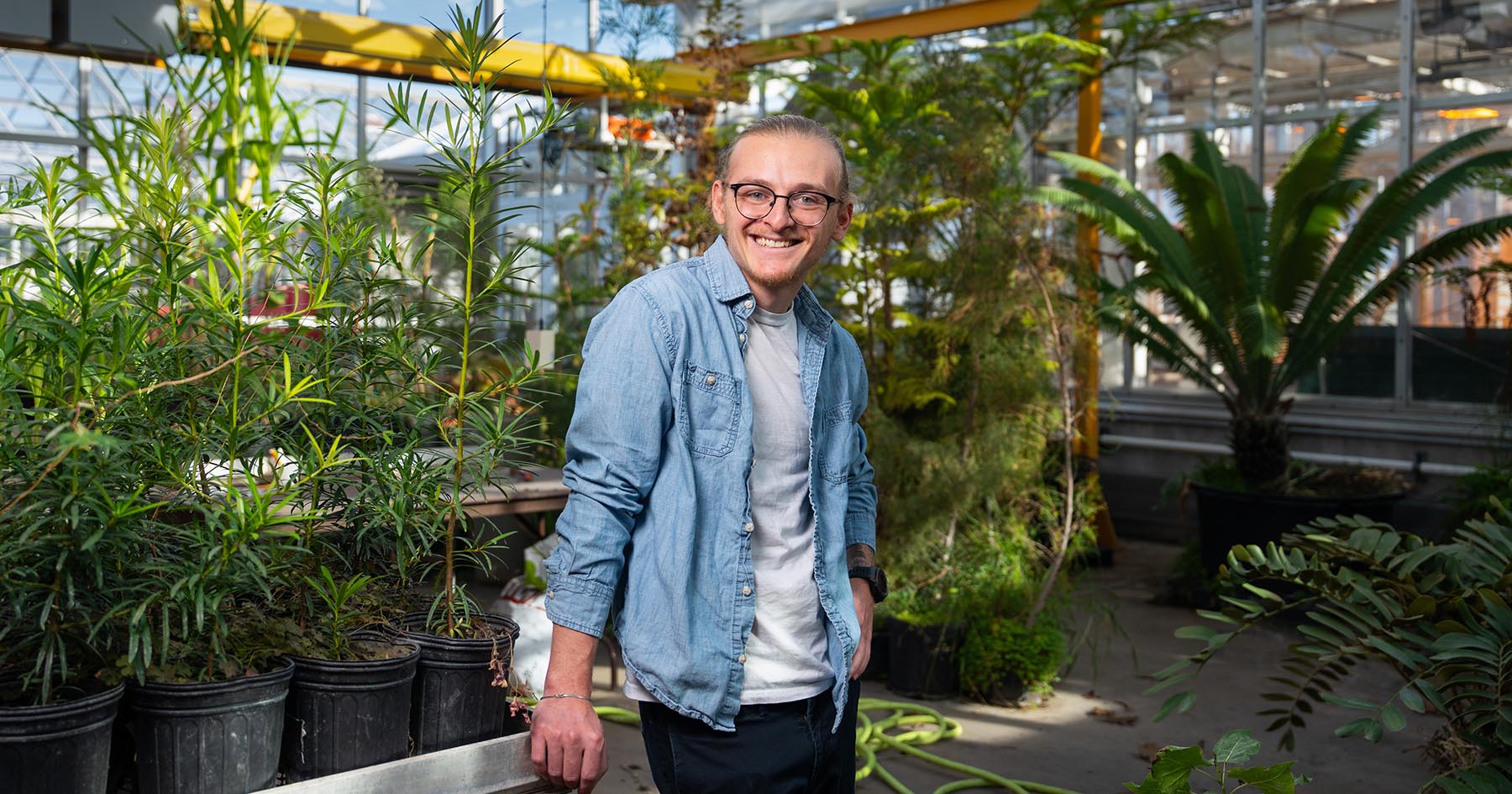Extending the season, improving food security
$3.7M project explores high-tunnel pest-management, rural-urban variation, creates an online tool for farmers
Small farmers across the U.S. use high tunnels to extend their growing season, something known to present different pest problems compared to open field production. However, as community farms grow to fill in for urban and rural food deserts, researchers see a gap in an understanding of how pest pressures vary depending on if the high tunnels are located in the city or country.
Laura Ingwell, an assistant professor of entomology at Purdue University, has been addressing these questions and works with specialty-crop farmers across the Midwest. She now leads a $3.7 million USDA National Institute of Food and Agriculture project through its Specialty Crop Research Initiative. The four-year project will lead to integrated pest management and crop management recommendations, as well as an online tool to help farmers decide what approach would improve their profit.
“We want to understand the environmental constraints for the plants and pests in high tunnels throughout the seasons, and how pest pressures may differ across the urban to rural landscape,” Ingwell said. “The goal is to help growers improve yields and profits, and to improve food security for local communities and sustainable practices for all growers.”
Ingwell’s team includes experts from Purdue, the University of Illinois and the University of New Hampshire in the fields of entomology, horticulture and agricultural economics. It also will include growers across Indiana, Illinois and the New England area.
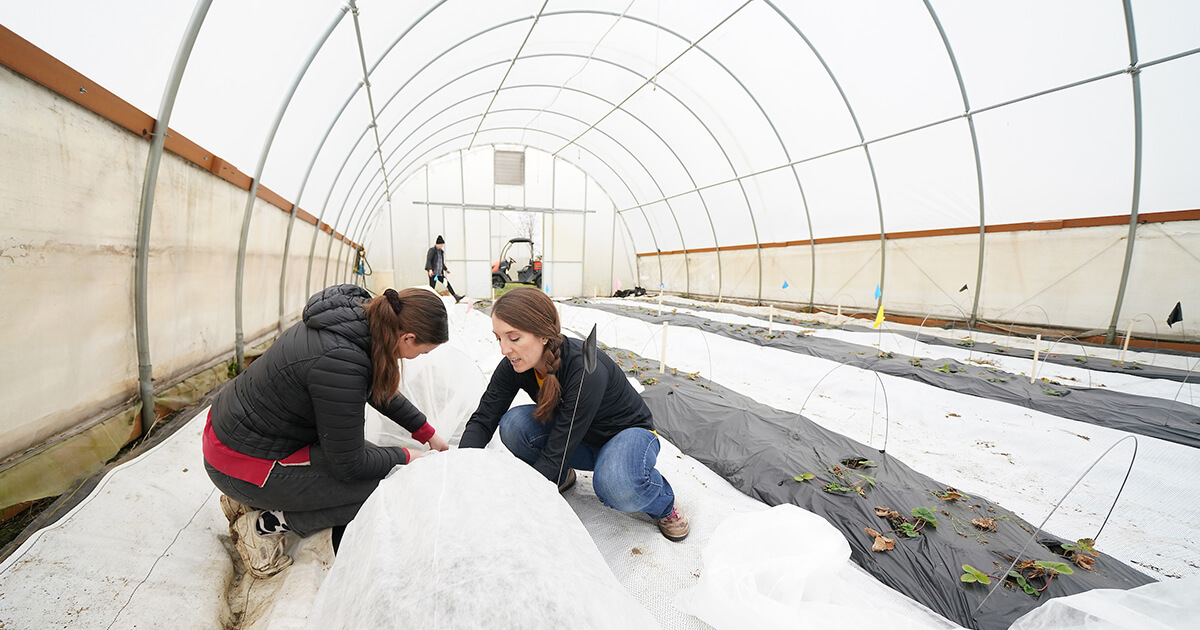 Laura Ingwell, an assistant professor of entomology at Purdue University, works in a high tunnel. Ingwell leads a $3.7 million project to explore integrated pest management in high tunnels to improve food security. (Photo by Tom Campbell)
Laura Ingwell, an assistant professor of entomology at Purdue University, works in a high tunnel. Ingwell leads a $3.7 million project to explore integrated pest management in high tunnels to improve food security. (Photo by Tom Campbell) “This study is a collaboration with the growers, and we are not asking them to change their crops or do anything differently,” she said. “We simply want to observe. Then we will be able to make recommendations and develop tools to help all growers from urban to rural settings and from community to small commercial systems.”
High tunnels are plastic barriers that cover crops and come in many shapes and sizes. Most are used to protect specialty crops, like tomatoes, cucumbers and melons, from cold weather and rainfall. Ingwell hopes to study a variety of high tunnels, crops and growing practices. Interested growers can contact Ingwell directly at lingwell@purdue.edu, or through their local Purdue Extension or Purdue’s Midwest urban agriculture programs.
The team will deploy weather stations to track air and soil temperatures, and humidity both inside and outside of the tunnels. They also will directly monitor pests and beneficial insects through site visits and passive traps.
The team also will collect data to build an online tool to calculate whether an investment in an integrated pest management strategy or crop diversification will be profitable for a farmer.
“We want to build an easy-to-use online tool, like TurboTax, where farmers can answer inputs and expenses questions and the tool performs an assessment and offers financial guidance” said Ariana Torres, an associate professor of agricultural economics and horticulture and landscape architecture at Purdue who is part of the team. “Not every farmer grows the same way. When you have multiple crops, it may be complicated to do these financial calculations and it takes time small farmers don’t have. We hope this tool will clearly show the impact of one approach versus another.”
The tool also will show the impact of integrated pest management over time.
“With integrated pest management, the first year farmers may not see much of an advantage, but the third year the pest population may significantly improve profitability. The long-term effect is important to consider. It also may show IPM is not a good investment. It all depends on the farmer and their production system.”
The bottom line is, ‘Is it worth it?” Torres said.
“These farmers have a very small profit margin, and this is their livelihood. We want to help them find the best match of crops and pest management.”
Improving profits helps keep small farms growing and they are needed more than ever, Ingwell said.
“Food access is very important, and even in Indiana we have places where it is an issue,” she said. “These small and medium farms are providing much needed food in food insecure communities, and high tunnels help them to continue to produce almost all year long in our climate. We want to give them every advantage we can.”
From Purdue, Ian Kaplan, professor of entomology, and Wenjing Guan, associate professor of horticulture and landscape architecture, also are part of the project team.
